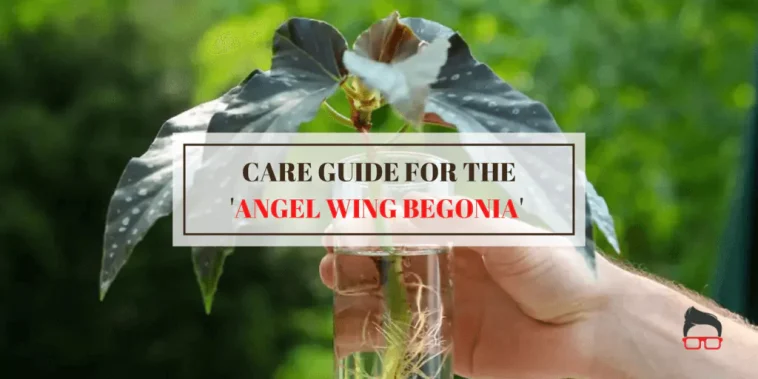If you are looking for some rainbow-colored beauty and a little bit of tropical vibes for your house or garden, look no further than the angel wing begonia. The angel wing begonia is known for its beautiful, wing-shaped leaves and clusters of colorful flowers and is favored by both seasoned growers and everyday houseplant lovers.
Whether you are a beginner in the space of houseplant gardening or someone who is already cultivating an indoor jungle, knowing about angel wing begonia care is inevitable if you want your plant to survive.
What Is An Angel Wing Begonia?
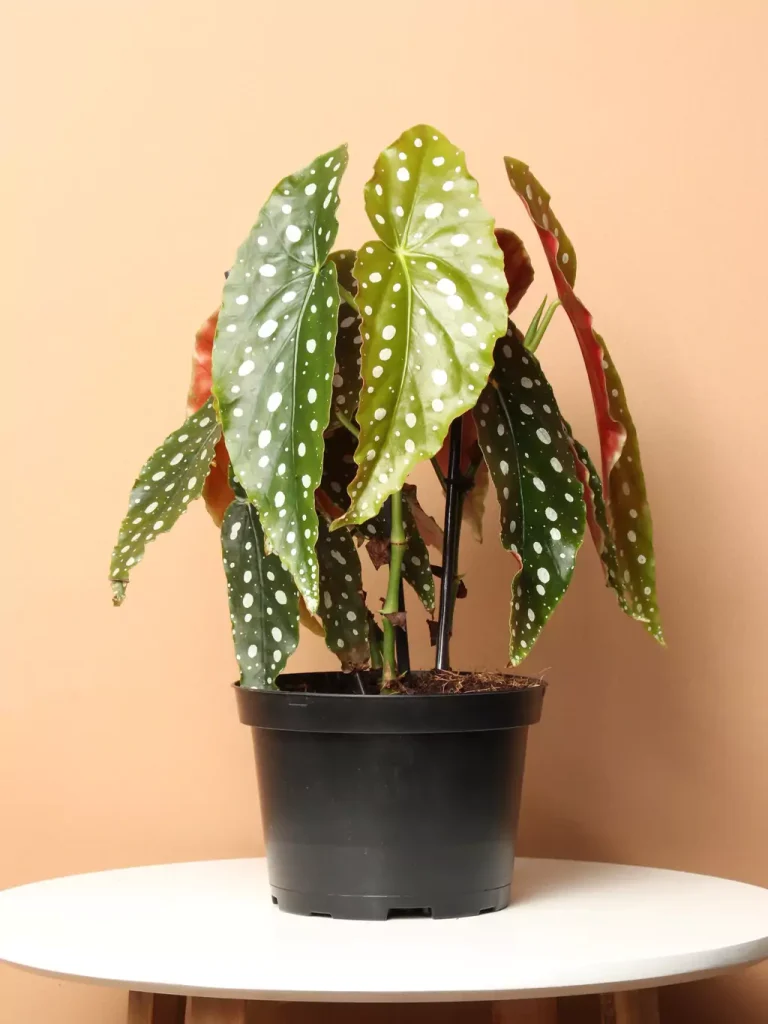
The plant comes from the Begonia Coccinea family and is often classified as “cane begonias” due to their upright growth style resembling tall bamboo.
While these hybrid begonias were originally cultivated in the mid-20th century, they soon gained popularity simply because of their beautiful foliage, upright growth, and everlasting blooms.
This plant is distinctive because of its deep green, angel-wing-shaped leaves, which have reddish overtones and glittering dots. When grown under the right conditions, angel wing begonias can have copious amounts of pink, red, orange, or white flowers that bloom from spring to late fall, and your plant can be enjoyed year-round.
Angel Wing Begonia Care: How to Help It Thrive
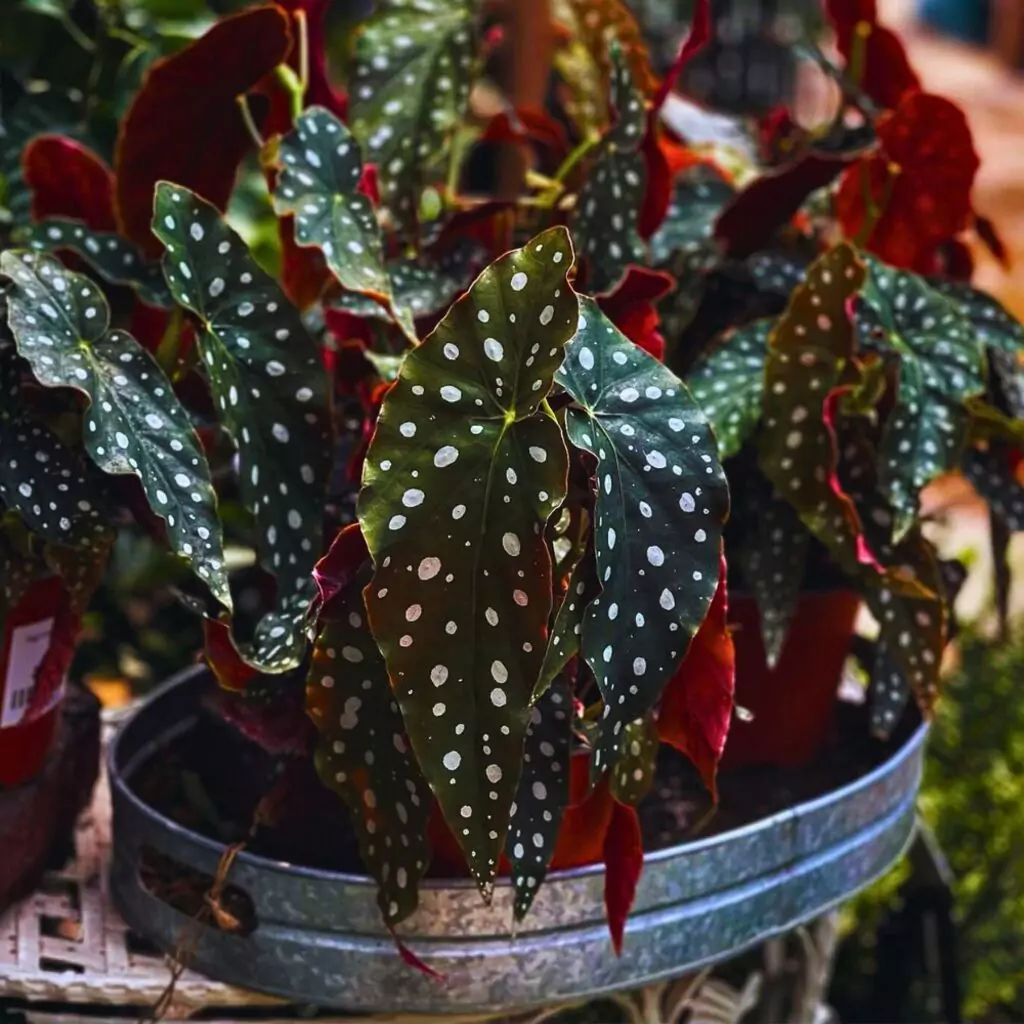
While growing a healthy angel wing begonia is easy, like all houseplants, the angel wing begonia requires some specific growing conditions. In this article, I will discuss the conditions you need to be aware of when growing a healthy angel wing begonia.
1. Light Requirements
Angel wing begonia prefers bright but indirect sunlight. Too much direct sun and you may scorch the leaves; however, too little light will elongate the stem with fewer flowers.
A north- or east-facing window will provide the best light, and if you are growing your angel wing begonia outdoors, choose a protected spot that is shady to semi-shady, which will protect the leaves.
2. Watering Routine
Watering your angel wing begonia plant is the most difficult condition for this plant. Angel wing begonias like to stay moist but do not like to sit in soggy soil.
Overwatering can result in root rot, and not enough water can cause the leaves to drop. In the growing months (spring and summer), you will be watering more than in fall and winter, as this is when the angel wing begonia will grow more slowly.
3. Humidity and Temperature
Angel wing begonias (Begonia corymbosa) are tropical plants that flourish in humid environments. Try to maintain humidity levels of 50% or higher. If you live in a dry climate, you may want to use a humidifier or use a humidifying tray with water and pebbles.
Maintain an ambient temperature range of 65°F to 75°F (18°C to 24°C). Avoid placement in sudden drafts or temperatures below 55°F (13°C), as temperature fluctuations can result in damage to the plant.
4. Soil and Fertilizer
Soil and Fertilizer use a potting mix with good drainage that contains organic matter and is ideally formulated for houseplants or African violets. You can also make your own soil mix of peat moss, perlite, and potting soil.
Feed your angelwing with a balanced liquid fertilizer now; your angelwing should be fed every 2-4 weeks during the active growing season. Cut down on fertilizing in the winter when the plant is dormant.
Pruning and Propagating Tips
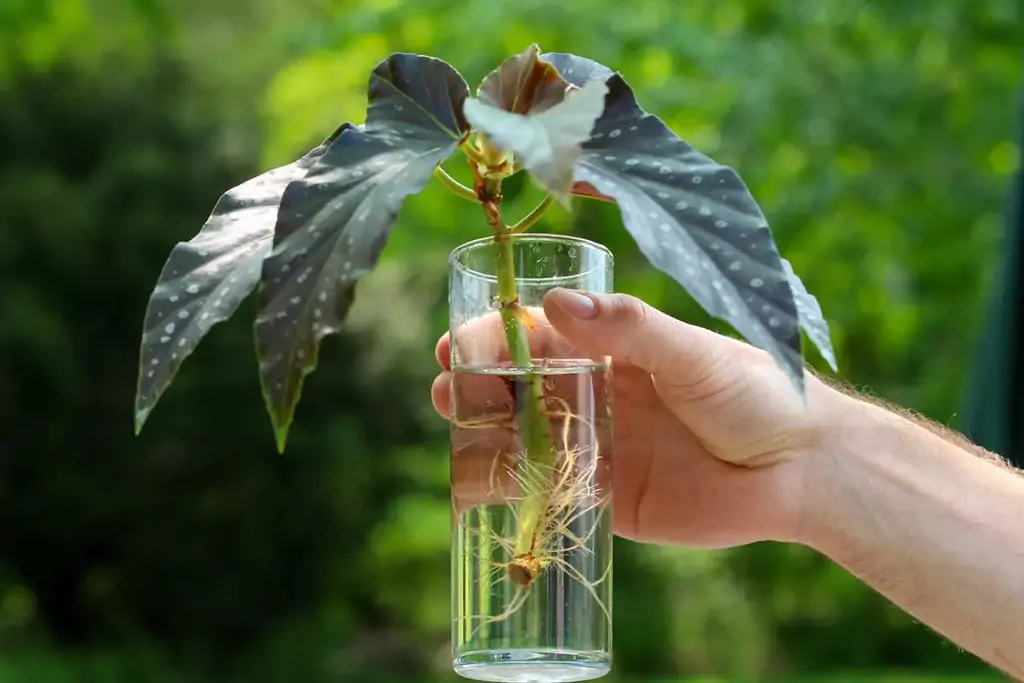
To keep your angel wing begonia plant looking its best, you need to prune it from time to time. If you are after good business and blooms, then trim off any leggy stems. Take sterilized scissors or pruning shears and cut a few inches above a leaf node.
Propagating is easy, just use stem cuttings. You can cut a 4-6 inch section below a leaf node, remove lower leaves, and place it in water or moist soil. Roots usually take a couple of weeks to develop, and you will have a new plant that you can share or keep.
Angel Wing Begonia Varieties to Explore
One of the most exciting aspects of growing these plants is discovering the different angel wing begonia varieties. Let’s discuss a few well-known ones to consider:
- Begonia ‘Silver Wings’: Characterized by dramatic silver spots on deep green leaves.
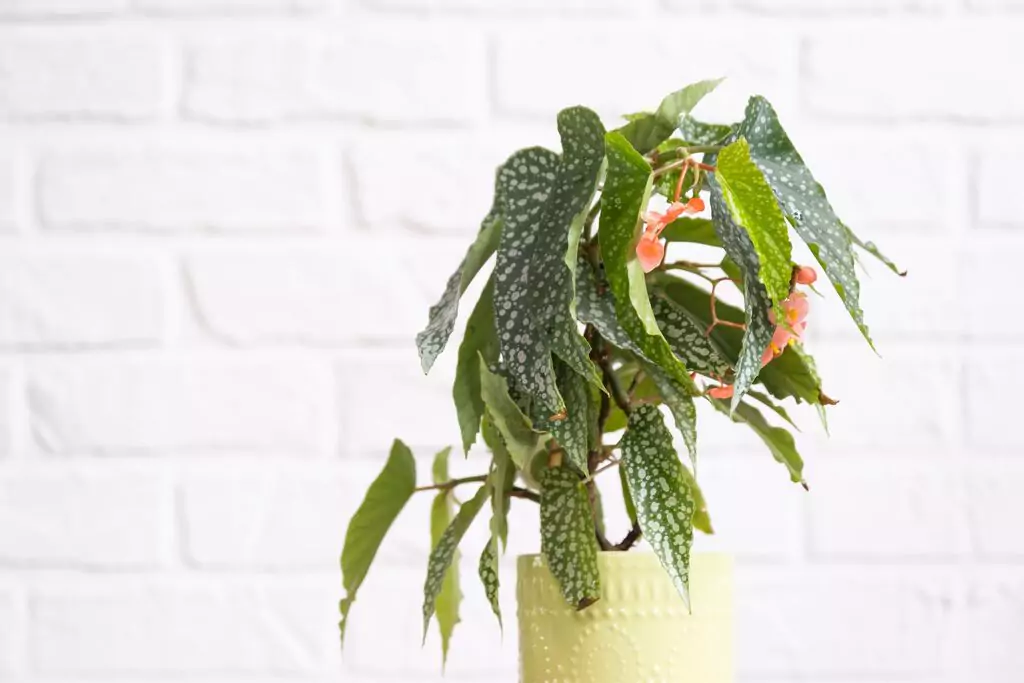
- Begonia ‘Lucerna’: A classic variety with pink blooms and speckled leaves.
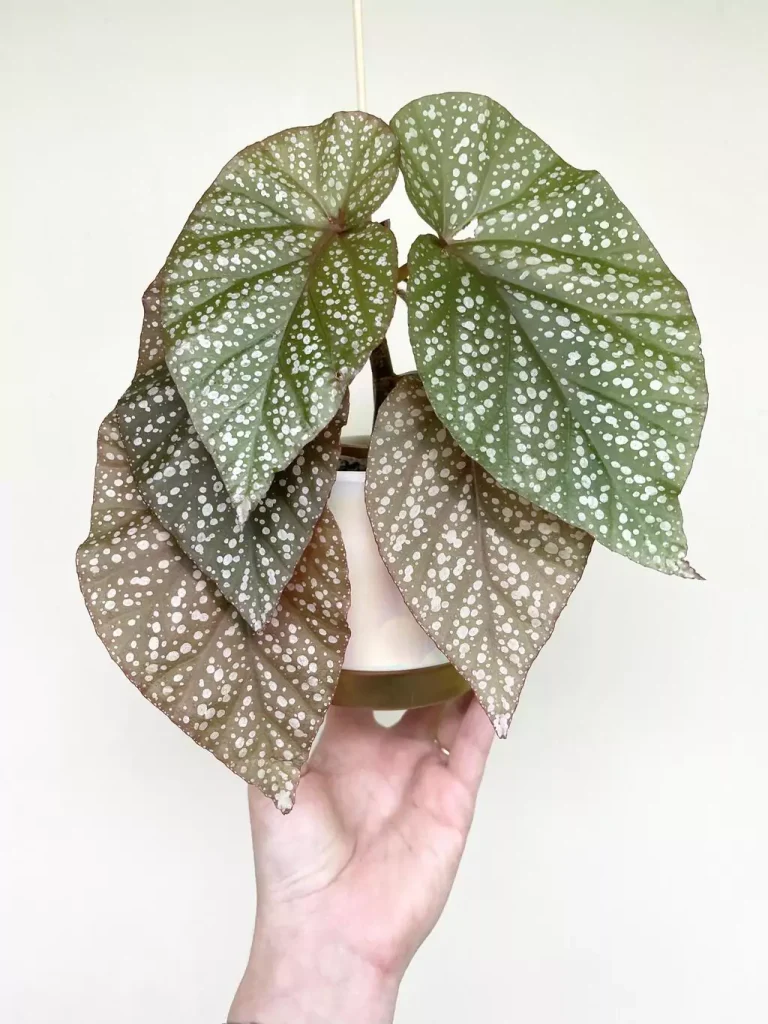
- Begonia ‘Super Cascade’: Known for its cascading growth and showy pink flowers.
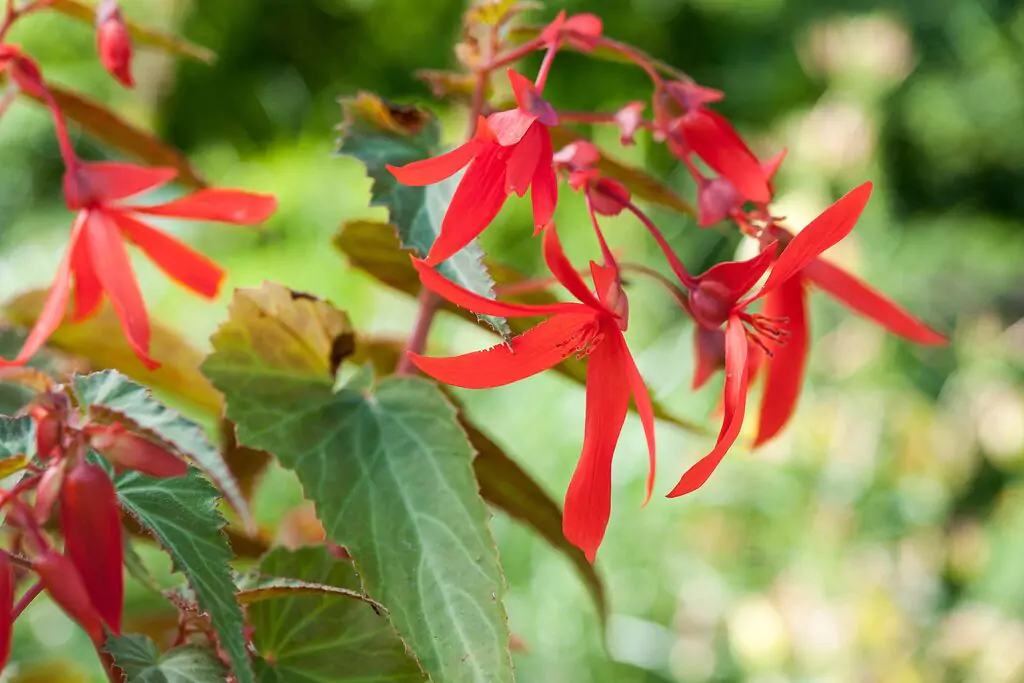
- Begonia ‘Torch’: Features red flowers and bright green foliage, perfect for bold color.
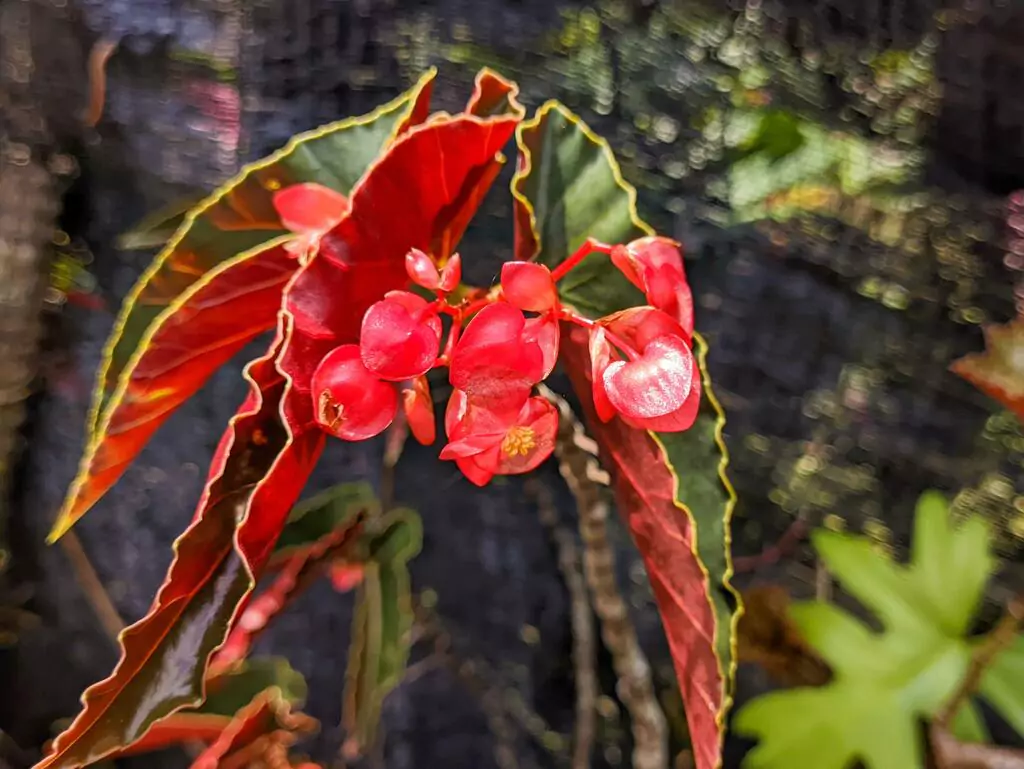
Each variety brings something unique, whether it’s in the color of the blooms, the intensity of the leaf markings, or the overall growth pattern.
Common Problems and Solutions
- Yellowing Leaves: This is a sign of overwatering or poor drainage.
- Leaf Drop: Can result from low humidity or sudden temperature changes.
- Powdery Mildew: A white fungal growth on leaves, often caused by high humidity and poor air circulation.
- Pests: Aphids, mealybugs, and spider mites should be avoided. Examine your plant frequently, and take care of pests as soon as possible.
Final Thoughts
The angel wing begonia is more than just a pretty plant, it’s a stunning, low-maintenance addition to any indoor or shaded outdoor space. With the right balance of light, water, and humidity, these tropical beauties will reward you with lush foliage and dazzling flowers.
Also Read:
- Lucky Plants for Home That Brings Positivity into Your House
- Top Plants That Purify Indoor Air Quality in Delhi & Mumbai
- 15 Top Gardening Hacks From Experts For Your Garden

